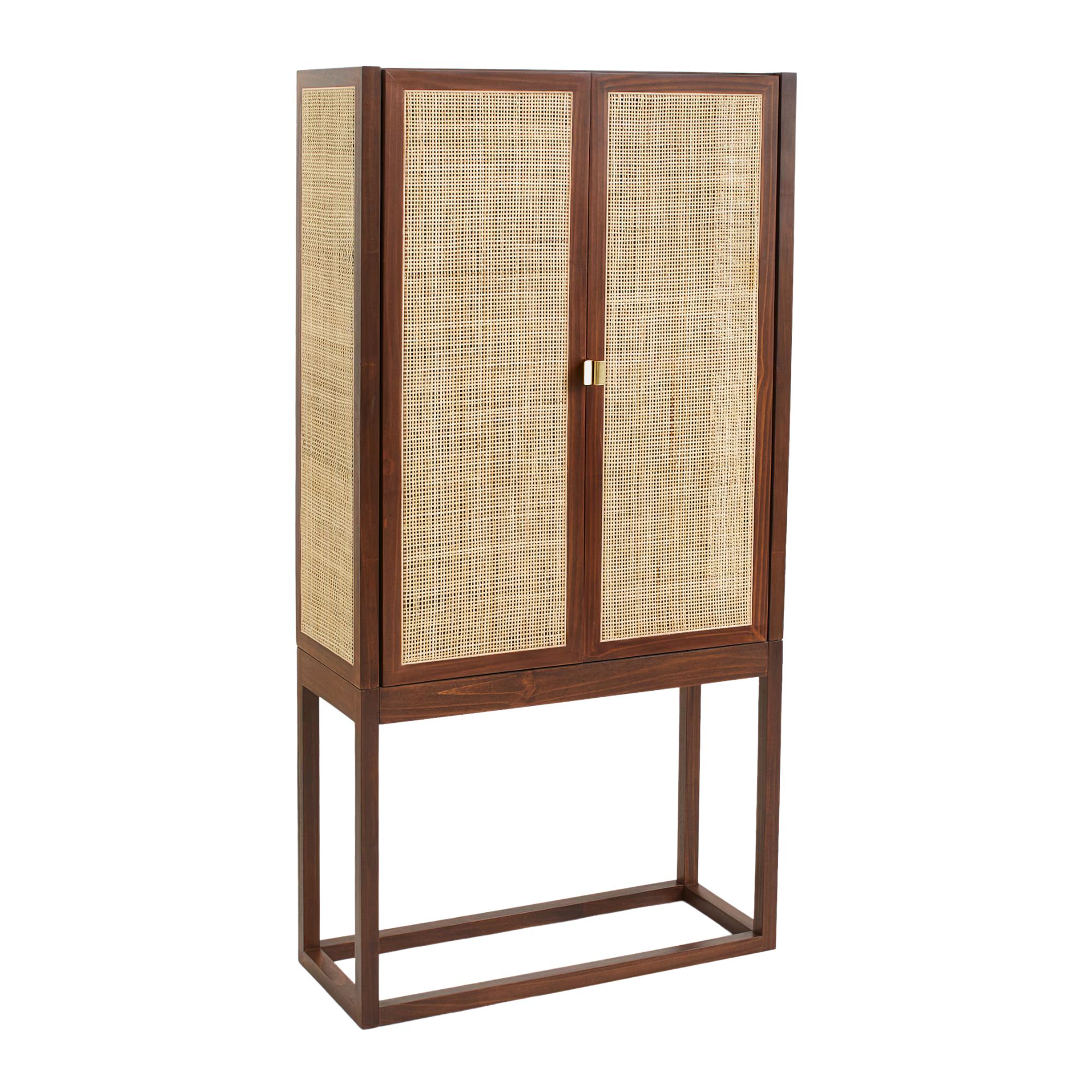Here's How to Make a Small Dining Room Look Bigger — 15 Ideas Including Palette, Pattern, and Proportion
Expand your mind (and dining room) without having to expand your footprint
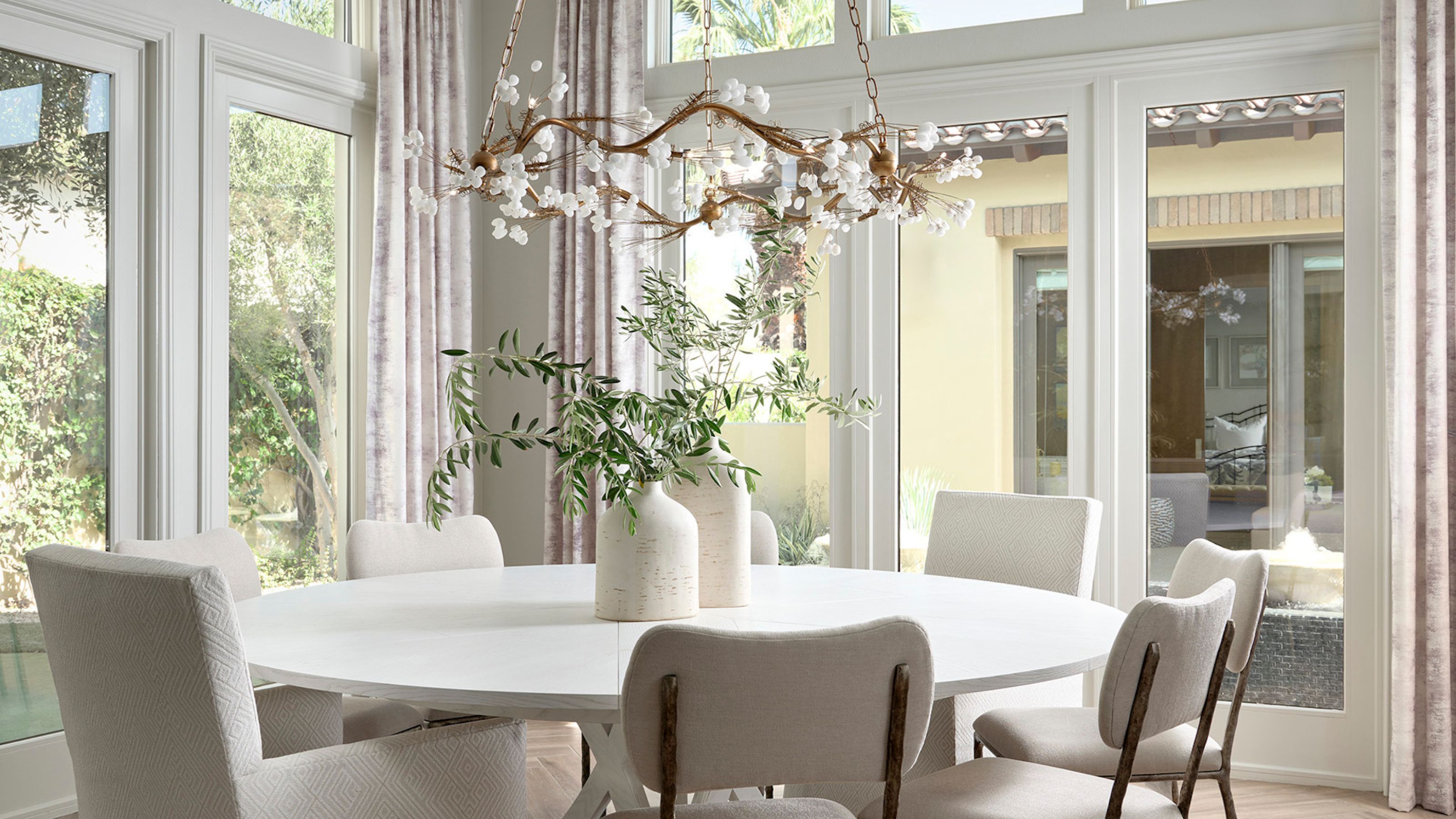

Aditi Sharma
Dining rooms might be an excellent place to host multi-course dinners or family feasts, but compared to other areas in your home — it often gets the short end of the spatial stick. But that doesn't mean it needs to feel claustrophobic. If you're looking for how to make a small dining room look bigger, there are ways.
In fact, with a little bit of spatial awareness and the right design know-how, it’s possible to create the illusion of a large, spacious dining room. (Yes, even when the footprint is actually miniscule.) And making your space feel open and airy isn't just about looks, it can improve the flow, make your dinner party guests feel more at ease, and even transform the area into somewhere you actually want to be.
But with so many small dining room ideas at your disposal, how do you know which space-enhancing strategies are actually up to snuff? To help, we asked interior designers for their top tips on how to make a small dining room look bigger. Some look to color palettes, patterns, and proportions, while others doubled down on the importance of the table. Regardless of which ideas resonate with you below, it’s safe to say you’re a few simple steps away from creating a beautiful, big-ish dining area.
1. Celebrate Natural Sunlight

If you’re looking for a bright idea to make your small dining room look bigger, it’s time to think outside of the box — literally. “Focus your eye on the exterior,” says Diane Rath, founder and principal designer at The Rath Project. “Drawing the eye outward helps extend the visual space and can trick the mind into feeling like the room is larger than it really is."
In an ideal world, Diane would recommend installing another window to create a sun-drenched space. However, for a tip that’s both low-maintenance and low-budget, she recommends selecting “eye-catching treatments” like the printed shades seen above.
2. Make It Monochrome

When it comes to selecting a color palette for your petite dining room, Houston-based designer Kara Childress says less is more. “We like to keep the palette cohesive and quiet so the eye doesn’t hit hard stops, focusing on soft neutrals, muted tones, and materials that patina gracefully over time,” she explains. “When you blend reflection, restraint, and a little old-world magic, even the most modest room can feel layered, light-filled, and inviting.”
The good news is that a monochromatic room doesn’t have to feel snoozy. Take a cue from this neutral space, which features a distressed column and tactile wooden accents, too.
The Livingetc newsletters are your inside source for what’s shaping interiors now - and what’s next. Discover trend forecasts, smart style ideas, and curated shopping inspiration that brings design to life. Subscribe today and stay ahead of the curve.

Kara Childress is renowned for her ability to blend Old World European elegance with modern, livable design, creating interiors that are both timeless and deeply personalized to her clients’ lives. Her designs are a harmonious marriage of tradition and innovation, resulting in spaces that are not only beautiful but also reflective of her clients. Kara’s collaborations with top architects, builders, and vendors ensure that every aspect of her design is executed to the highest standard.
3. Punctuate With Pattern

Some designers believe a crisp, neutral palette can have room-expanding powers. But for Kelly Neely? The Birmingham-based designer believes a little pattern play never hurts.
“A pattern on the wall can create a distraction to the size of the room and instead create a unique experience for the end user,” she explains. The botanical repeat she selected for this room ticks off all the boxes: beautiful, busy without being overpowering, and naturally draws the eye upward and outward.
4. Beauty With A Breakfast Nook

Why allocate an entire room’s footprint for meals when a simple nook will do? “When possible, use banquette seating along a wall to create a wider walkway on one side of the room,” Kelly says.
By pushing the dining setup to one corner, you’ll be left with enough room to add a wet bar, sideboard, or some blank space. (Talk about a visual exhale.)
Best of all, a dining nook is a relatively easy look to recreate: for a cozy-yet-chic setup, grab a smaller round table, a few chairs, and a settee.
5. Reveal A Reflection
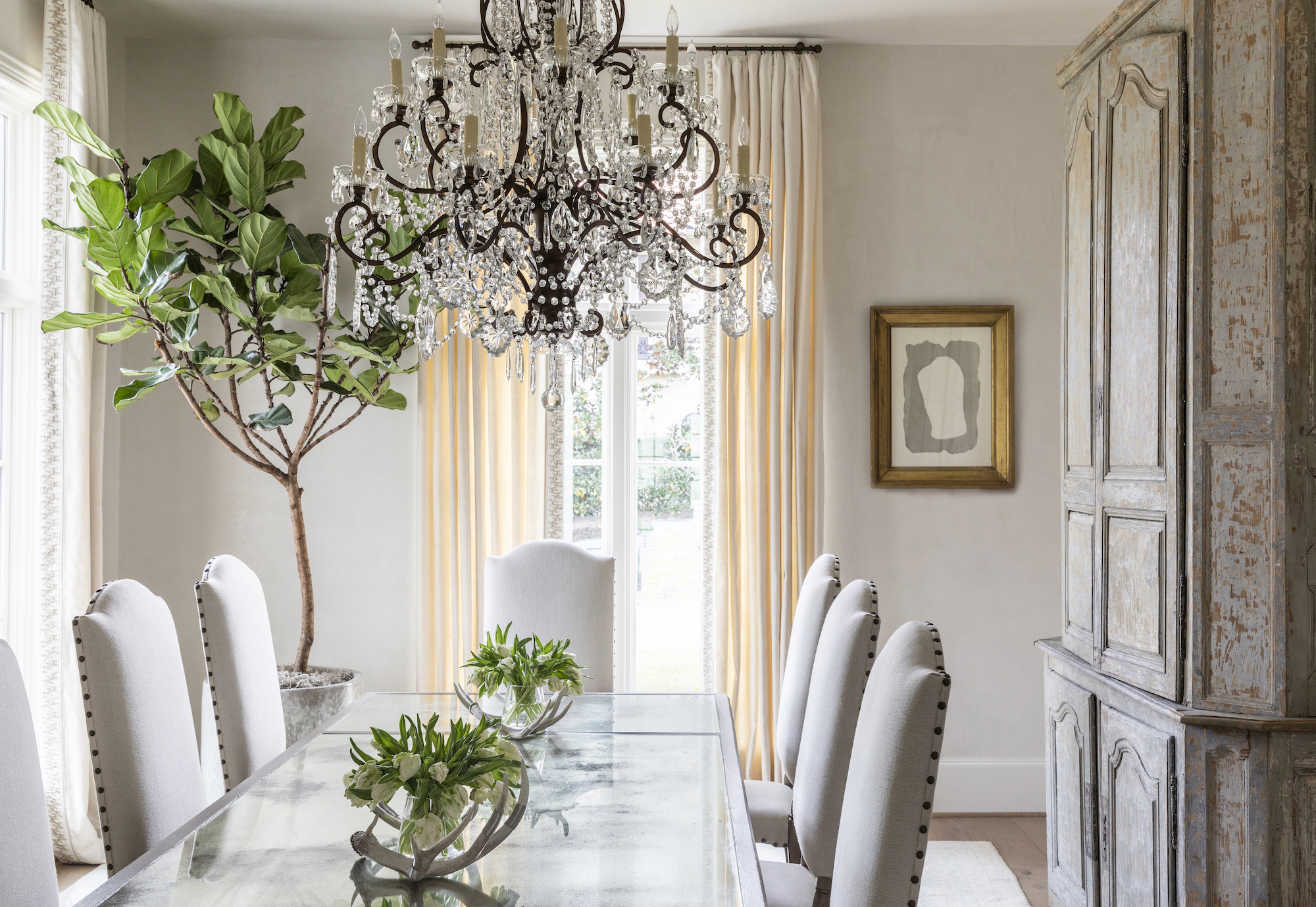
According to Kara Childress, the right table can make your small dining room look bigger. Her secret: look for dining room tables with a mirrored top like the one featured in this space.
“Its antiqued mirror top acts almost like a second window, bouncing light and visually opening up the room even more,” she shares. “It’s subtle, but the effect is truly transformative.”
For some extra sparkle, hang a crystal chandelier over your mirror-topped table and allow your space to glow.
6. Introduce a Mirrored Wall

"If a room isn't well lit, it can feel smaller and more cramped," explains designers Jen and Mar of Interior Fox. "Our first suggestion is to try to get more natural light in by using a big mirror to get reflections from the windows."
But rather than cramping your space with mirrors, opt for a mirrored wall, instead. It will help bounce light around the room, disappear into the architecture, and create the illusion that the space is double the size it actually is.
In the small dining room shown above, the design team at Mistovia positioned a mirrored panel next to the compact dining area, offering an outlook onto the open concept space rather than staring at a solid wall.
7. Go Glossy
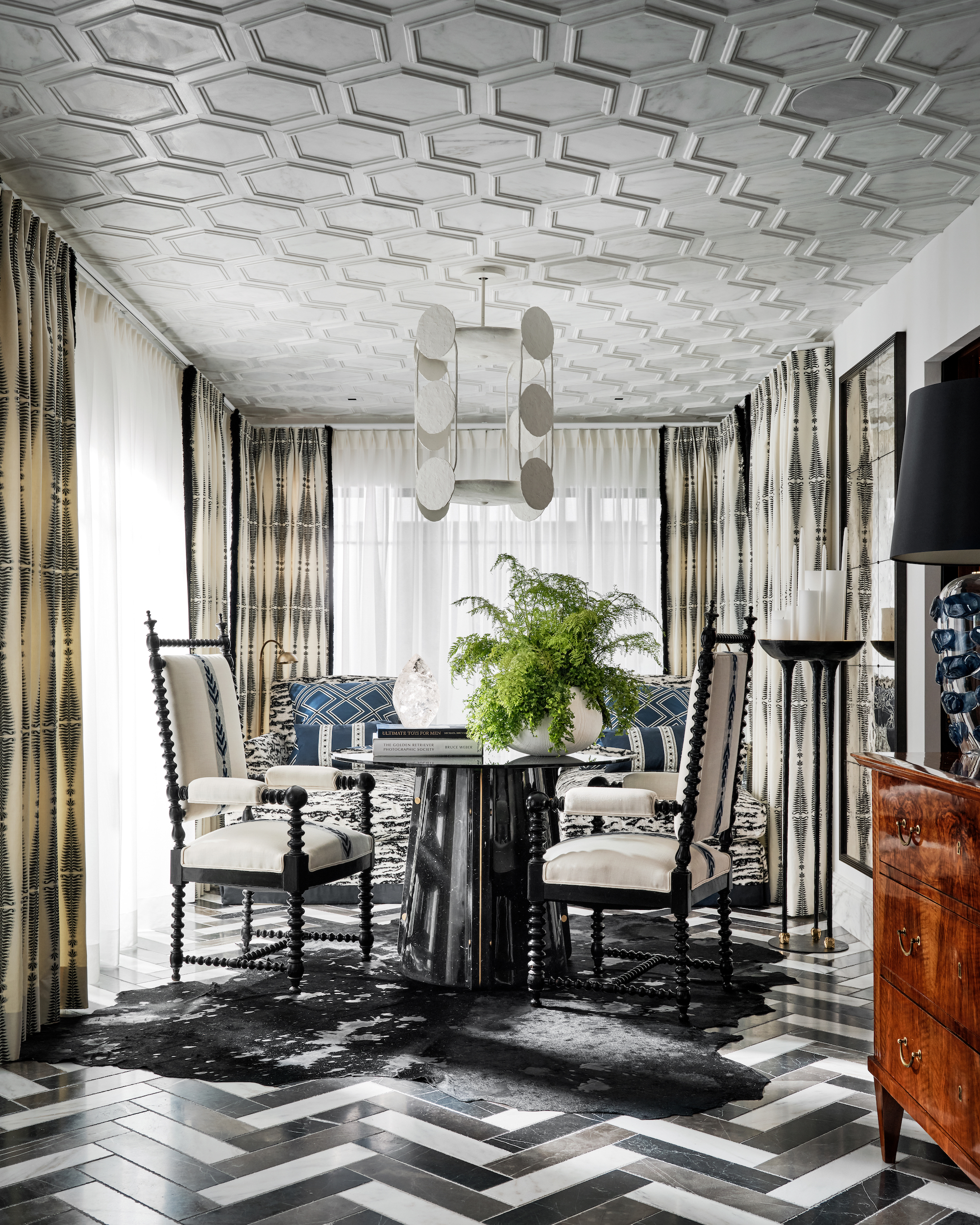
Mirrors aren’t your thing? Instead of reflective surfaces, give your room a glow up with glossy surfaces. (Try saying that five times fast.) In a recent lake house project, Tanner Morgan of Morgan Madison Design wrapped the dining and kitchen ceiling in shiny tile, a detail that instantly draws the eye upward and gives a typically overlooked surface a moment to shine.
“The irregular texture and glossy glaze of the tiles catch the natural light off the water in a way that feels almost cinematic,” the Scottsdale, Arizona designer shares. “Soft reflections dancing across the ceiling and shifting throughout the day.”
Morgan might’ve opted for tile, but you can always recreate the look with a lacquered dining room set, or even lacquered walls.
8. Defy Gravity

Honestly, when it comes to how to make a small dining room look bigger, the sky’s the limit. Morgan says that emphasizing your ceiling’s height can make your space feel taller and larger.
“Scale is everything,” the designer explains. The secret, he says, is to incorporate vertical decor. “The addition of the tall, slender Corbin bronzes flanking the view amplifies the verticality of the room and balances the chandelier,” Morgan explains. “It guides the eye upward and frames the space with quiet strength.”
9. Turn Negative Space Into A Positive

Turns out, there’s more to space-enhancing dining room furniture than the materials it uses. According to Sedona-based designer Stephanie Larsen, the silhouette is equally important.
If you want to trick people into thinking your small dining room is larger than it really is, she recommends selecting furniture with open or thin legs. “It keeps sight lines clear and reduces visual clutter,” she explains.
In this space, a series of slim brass legs reduce visual clutter and add a modern touch to the mix.
10. Embrace Your Curves

Since a dining table anchors the rest of the space, it is arguably one of the — if not, the — most crucial parts of your room. Slim legs and glossy surfaces matter, but so does the overall shape.
“A round pedestal table paired with armless chairs you can tuck in keeps the dining area feeling open and cozy,” says Katie Rainwater, a Denver-based designer with Inside Stories. ‘It frees up the corners — perfect for a little bar cart moment — and improves flow around the space.”
11. Opt for Open-Backed Chairs

But when it comes to how to make a small dining room look bigger, it's not just about the table. Your choice of dining chair matters, too — and keeping long, unobstructed sightlines with open-backed chairs will ensure the space remains bright and airy.
"Keep the chairs lights, perhaps open-backs that are not too high above the table would be ideal," says Jennifer J Morris, founder of JMorris. "And keeping chair legs and console chairs thin can also create that light feeling."
12. Be Strategic With Your Storage

For a dining room that’s pretty, practical, and seemingly elephantine, add some smartly placed storage.
“One of my favorite tricks for making a dining room feel more spacious is playing with height,” says Maryland-based designer Julia Longchamps. “Extending cabinetry to the ceiling or incorporating a tall hutch draws the eye upward, instantly giving the illusion of a larger space.”
Pro tip: select cabinetry with glass-fronted doors. That way, you can increase your storage space and turn it into a personality-packed shelf-ie moment.
13. Draw Eyes Up With Pretty Pendant Lights
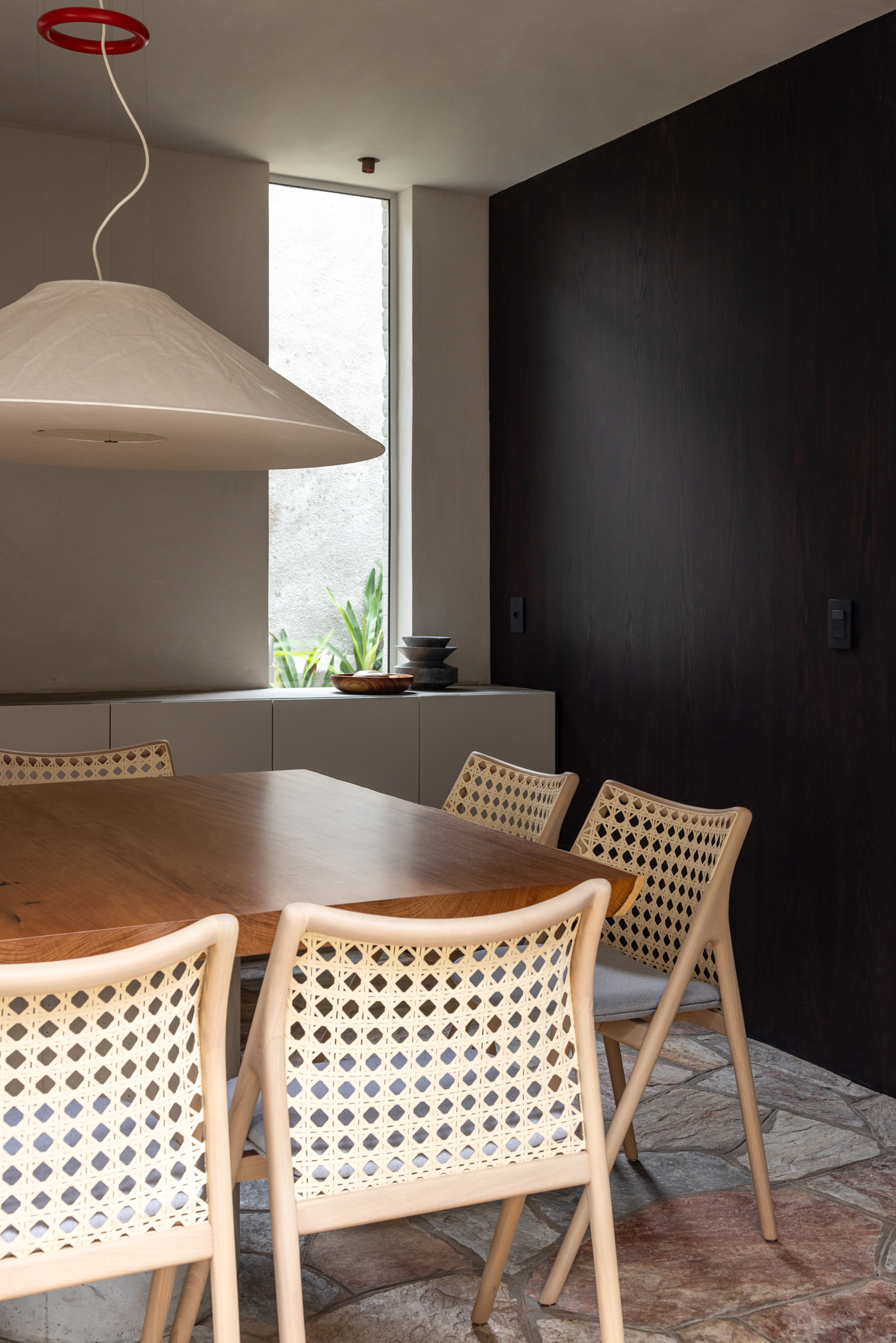
We've already discussed how finding ways to raise eyelines helps make a small dining room look bigger, but there's another way to do it: pendant lights.
"If the room is small but if it has tall ceilings, try drawing the eye up with a pendant light," says interior designers Jen and Mar. "If the room is narrow, try adding wall lights."
And there are tricks you can employ in terms of positioning your pendant lights, too. One way to make a space feel cozy (rather than cramped) is to hang the lights low. Also, opting for warm lights will reduce shadows, as well as feel more comfortable to sit under.
14. Play With Proportions

Make the most of an open floorplan by anchoring your dining area with an oversized rug.
“Using a rug that fills up the entire footprint of the room draws your eye out and defines the space,” says Staver Gray, co-founder of a New York-based firm called Ward + Gray. “Even if the furniture has a tighter footprint. In this mid-century, Staver used her own rug design to create a large dining space, despite the table needing to be thinner to fit the floorplan.

Ward + Gray, a New York City-based boutique interior design firm led by principals Christie Ward and Staver Gray. With a studio in Manhattan’s SoHo neighborhood, Ward + Gray work on hospitality, residential and commercial projects across the US and internationally, as well as product design.
15. Go Low (With Your Seating Choice)

For something a little bit different, one way to make your small dining room look bigger (or at least taller) is to go low with your seating choice.
"Traditionally Asians are accustomed to sitting on the floor and eating," explains architect Shiraz Jamali. "It’s also considered healthy, and with all things old making a huge come back, we decided to built this low dining table for our client. Not only does it look great but also opens up the space and makes the room feel more open and airy. The rustic live edge wooden table is juxtaposed with the unusual carved wooden balls for legs creating an interesting blend of styles."
FAQs
What colors make a small dining room look bigger?
Most people wanting to make a small dining room look bigger will gravitate towards white, and they're not wrong. It is well-known that light colors make a room feel lighter, brighter, and therefore, bigger, but it's not just about the color you pick.
Different paint finishes can also help — eggshell and satin paints will help reflect the light, creating the illusion of more space. It's also worth picking a white paint with a warmer undertone so it doesn't feel stark.
If you're after a more saturated color, try and light taupe or greige, which will help enlarge the space, while also ensuring it still feels elegant. These hues also help to bounce light around a space, like white.
For something a little more 'out there', a blush pink can help brighten a small room, and perfectly complements woods and metals, for a luxe look.
What pattern makes a small dining room look bigger?
To help make a small dining room look bigger, opt for patterns that will create the illusion of more space, such as horizontal or vertical lines, which will make the space feel taller or wider. Similarly, chevron, herringbone, and geometric patterns help to draw the eye around the room.
In terms of other prints, such as florals, larger-format styles will also trick the eye into thinking there's more space in the room, whereas a smaller, busier print could make it feel cluttered, and claustrophobic.
Why stop the spatial awareness at your dining room when there are so many other rooms craving the same tender, loving care?
Fortunately, we’ve found plenty of genius tricks and counter-intuitive ideas for small spaces, all over your home.

- Aditi SharmaFormer Design Editor

